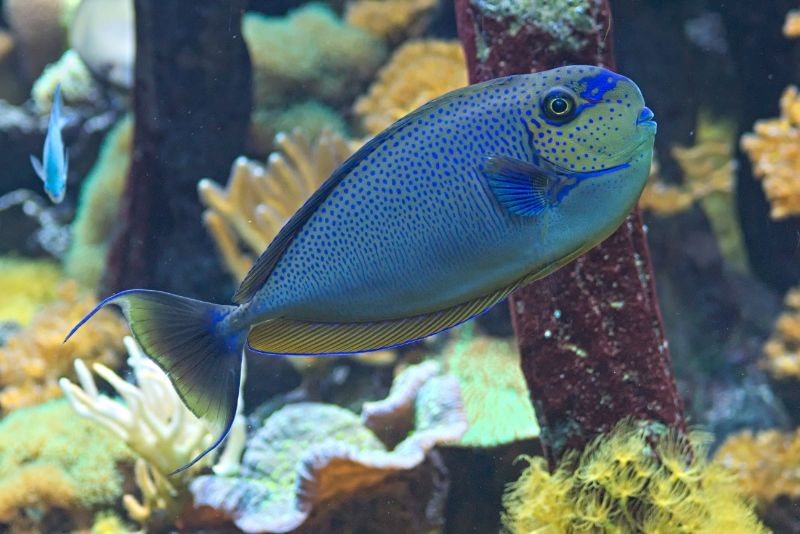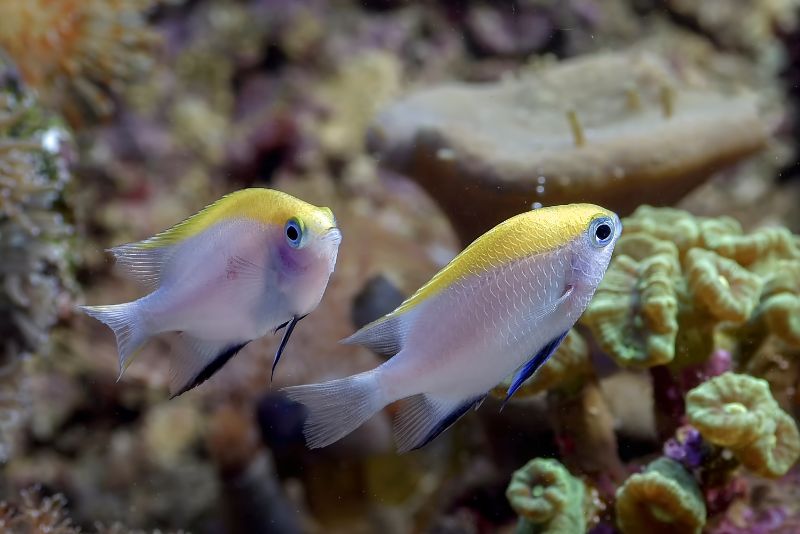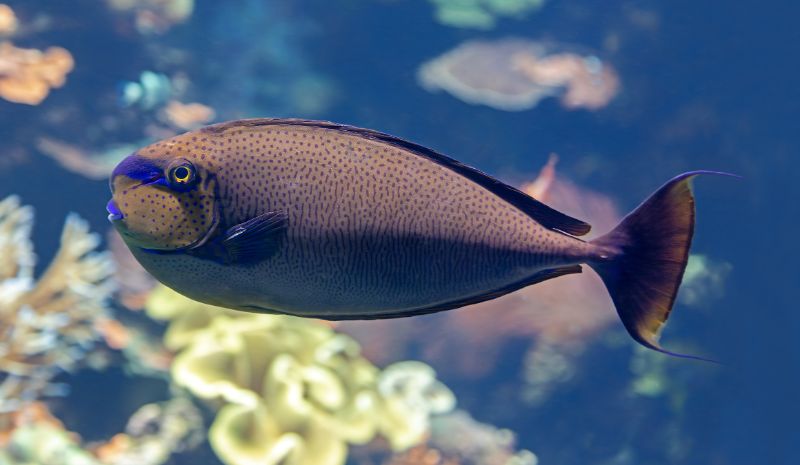Discover the Fascinating World of the Vlamingi Tang Fish

Ever wondered about the captivating world of the Vlamingi Tang fish? These incredible creatures are a sight to behold, boasting both size and unique coloring. Let’s dive into their intricate, fascinating life below the water surface.
The Alluring Appearance of a Vlamingi Tang

As a part of the Naso tang species, the Vlamingi Tang makes a unique statement due to its nasal bump or horn. Interestingly, this feature gives rise to its nickname – the bignose unicorn fish. Its remarkable size – averaging two feet in length, and distinctive color pattern have made it a top choice among aquarium enthusiasts. This Tang fish transforms from a youthful brownish-green to a mature grayish-light blue body adorned with striking blue markings and lines. Of course, the vibrant blue trims on its mouth and around the eyes are hard to miss. However, these captivating colors start to reveal themselves only when they reach about five to six inches in length.
Recommended Tank Size
Considering their size, a Vlamingi Tang requires a substantial amount of space to thrive – ideally a tank that contains at least 110 gallons of water and measures six feet by two feet. If you’re enthusiastic about introducing more than one to your aquatic family, it’s best to prepare an even larger home.
Social and Dietary Preferences
Vlamingis are naturally curious, semi-aggressive, but with the potential to coexist peacefully with others if they grow up together. Only sustain one adult Vlamingi Tang per tank to avoid territorial disputes. In terms of diet, these marine creatures are hadcore omnivores. They feed off from the following:
- Mysis shrimp
- Chopped krill
- Clams
- Crabs
- Plankton
Supplement their diet with spirulina-enriched flakes for their daily dose of vitamin C.
Habitat and Health Concerns Surrounding the Vlamingi Tang
In their natural environment, you can find the Vlamingi Tang swimming in the Indo-Pacific Ocean waters, in places ranging from East Africa to Japan. Aquarium Vlamingi Tangs, however, can be prone to certain health issues such as Marine Ich, Marine Velvet, and Lateral Line Erosion. Timely treatment with copper-based medicines can prove beneficial.
Creating an Ideal Environment
Notable for their fondness for ample space, moving water, and oxygen, creating an environment mirroring their natural habitat is crucial. Plenty of hiding spaces and a healthy water movement can make your Vlamingi Tang feel right at home. These non-static swimmers are an endearing sight and despite their knack for damaging the reef, they’re an exciting addition to any large, interactive aquarium.
See Related: Fishing with the Best: Unveiling the Top Bream Lures for Guaranteed Success
The Monetary Aspect of Vlamingi Tang Ownership

Remember, although young Vlamingi Tangs start out around $45-$65, their sizeable diets, the need for large living spaces, and potential health treatments can add up. If your heart is set on getting one, ensure your preparedness to cater to their needs for them to thrive in their new homes. Enjoy your journey of discovering and caring for the Vlamingi Tang fish, a vibrant and extraordinary aquatic creature.
Related Resources: